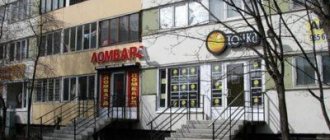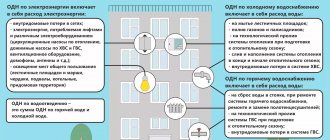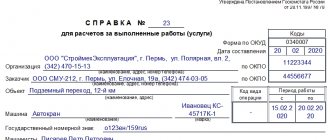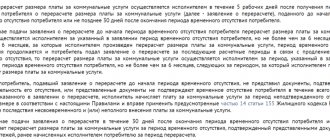Concept and goals of the Bureau. What legal norms govern its activities?
The definition of “BTI” means a state structure that carries out certain technical accounting of various real estate objects.
Today, BTI has about 83 branches and more than 1 thousand branches throughout the Russian Federation.
Territorial representations carry out accounting not only of land, but also of:
- private houses;
- various residential buildings;
- various residential buildings and the like.
The main goals of work activity include:
- full ensuring the uninterrupted functioning of the state registration system;
- collection of all necessary information regarding real estate objects not only of the population, but also of companies;
- creation of statistical records;
- formation of the necessary tax base, which is the basis for the calculation of not only taxes, but also other fees by representatives of the tax service.
are subject to accounting :
- all land plots without exception;
- various objects whose construction has not yet been completed;
- premises (meaning residential and non-residential);
- other buildings.
At the same time, archives imply a collection of all necessary information regarding:
- large productions;
- garden buildings;
- highways and so on.
It is worth noting that all information in the archive, without exception, has been collected for decades.
How to build a numbering system
In order to correctly assign an inventory number to a fixed asset and to make it easier to find it by inventory number in the future, the following sequence of numbers in the number can be selected:
What objects are subject to numbering
3. The inventory number is retained for the fixed asset even when the object is moved within the same organization. If an inventory item is used by an enterprise under a lease agreement, it retains the number that the lessor gave it.
In the event of destruction of the main structure (due to fire, natural disaster, demolition, etc.), the existence of the inventory object ceases, about which a corresponding entry is made in column 15 of the registration book. Certification (and registration) of an object created or restored in place of previously existing ones is carried out in the usual manner, as newly created (identified).
Institution structure
In the course of their work, BTI employees cooperate particularly closely with almost all not only federal, but also municipal bodies and structures.
In particular, we are talking about such bodies and structures as:
- housing and communal enterprises;
- various land development committees;
- territorial bodies of Rosreestr;
- various insurers;
- courts, financial institutions, notaries and other similar bodies.
In turn, the structure of the BTI is heterogeneous , and under this lies many different institutions, namely:
- branches in small regions. As a rule, they are located in cities with a population of up to 200 thousand people;
- branches in small towns;
- the so-called workshops of utility companies;
- various representative offices;
- legal entities.
It is worth noting that this company does not receive any subsidies or other financial government assistance, so it is forced to rely only on its own income.
For this reason, the number of hired staff and the number of branches varies by region:
- in Moscow the structure has more than 1 thousand hired workers;
- in sparsely populated cities - the number on average varies from 5 to 10 workers;
- In densely populated cities, there is often a so-called organizational form - MUP BTI (municipal company), which employs about 800 people.
Often, BTI carries out its labor activities as a branch or a state company - a federal state unitary enterprise (GUP).
Such fragmentation in form can only be explained by the fact that there is no need to maintain huge branches with a considerable number of hired workers in sparsely populated cities, where the volume of real estate, including transactions with them, is small.
Based on this, the company’s self-sufficiency forces it to organize its work activities in such a way that it brings economically justified benefits and justifies financial expenses.
Types of services and their costs
The Bureau was able to obtain the necessary accreditation, which now allows us to carry out work regarding technical inventory , namely:
- carry out inspections of various real estate objects;
- generate all necessary documentation;
- make estimates relative to cost;
- assess the condition of real estate;
- produce technical passports;
- produce cadastral passports for individuals or companies.
Additionally, services are provided in the following areas:
- providing the necessary technical opinions regarding capital structures;
- archiving of all necessary information;
- registration of various capital construction projects.
In relation to land plots, the following types of work are carried out:
- defining clear boundaries;
- preparation of all necessary land management documentation for various needs;
- combining plots, as well as assigning a different category;
- conclusion of rental agreements.
The cost of services directly depends on the region of the Russian Federation:
- carrying out work regarding land management with further documentation varies up to 10,000. The lowest cost was recorded in the southern region of Russia (about 2 thousand in total), the highest in the central regions of the Russian Federation (up to 10,000 rubles);
- provision of a cadastral passport – no more than 500 rubles;
- formation of the necessary step-by-step plan - on average 2 rubles for each square meter of real estate;
- providing a certificate regarding the condition of the building - an average of 250 rubles;
- formation of an explication for the technical plan - on average 2 thousand rubles;
- the ability to determine the inventory cost of an object - no more than 450 rubles.
To clarify the necessary information and a complete list of services provided, you can find out by contacting the territorial representative office of BTI or on the official website.
What documents can be prepared at the Bureau?
The authority of the institution allows you to formalize :
- an extract from the technical passport of buildings (formed according to form 1a);
- an extract from the technical passport of the BTI in form 1b;
- a certificate for the possibility of formalizing various land relations;
- a certificate regarding the total area of a residential building with stove heating;
- a certificate regarding the current condition of the structure or premises;
- a document regarding the cost of the land plot and public areas in the building;
- documents for owners of their own homes;
- documents in form No. 22 and No. 25 regarding the explication for the developed floor plan of the building;
- land plans;
- floor plans of buildings;
- floor plans of buildings in electronic format;
- documents regarding the inventory cost of construction;
- documents on the cost of rooms or rooms;
- documents regarding the cost of 1 square meter of attic space in order to be able to provide permission to convert the attic into living space;
- make calculations and provide supporting documentation regarding the cost of residential premises in the process of transferring from residential to non-residential stock;
- draw up documents required by the state commission;
- documents regarding the cost of apartments in the process of forming a lease agreement with the provision of the right to buy and agreements on the issue of purchase and sale, including the installment plan option;
- documents regarding the cost of living space and premises being sold on the basis of the Decree of the Moscow Government;
- documents on the issue of identifying the address of real estate objects;
- develop and provide a graphical attachment to the address registration document;
- documents that can confirm the fact of renaming streets and so on;
- formulate and provide address plans or parts of any territory;
- documents regarding the addresses of residential or non-residential buildings in city blocks;
- develop and provide projects on the issue of approving facility addresses.
In fact, this list is not exhaustive, but contains only the most popular documents, the formation of which BTI representatives have to deal with.
A complete list of them can be found on their official portal.
Inventory of real estate in 2018
The latter are usually interconnected. A single crack usually occurs from structural overstress. In tension, for example, one crack appears; it is enough to relieve tension. The appearance of a group of cracks is more likely in concrete structures with low quality work, as well as in thin reinforced concrete slabs and in the surface layer of reinforced concrete structures.
Inventory of buildings and structures
The features of this procedure are regulated by order of the Ministry of Finance of the Russian Federation dated October 13, 2003 No. 91n, approving the Methodological Instructions for accounting for fixed assets (clause 1, clause 11). A separate inventory object is assigned one number, which must be applied to the object: with paint, by attaching a metal token or by another method. The number must be clear and easily readable. If the object is intangible (for example, a licensed program) and during use it is not possible to record a number on it, then it is reflected only in the accounting documentation.
There are several ways to do this. For example, add a corresponding section to the organization’s accounting policy, or make an appendix to it. However, we do not recommend using this option, because... The accounting policy is subject to special rules regarding the introduction of changes and adjustments (clauses 6 and 7 of Article 8 of the Accounting Law). Therefore, it is not worth introducing additional provisions into it, so as not to deprive yourself of freedom of maneuver.
You may be interested in:: Payments for 3 children in the Saratov region in 2021
Autumn is a busy time for an accountant. We need to submit reports, decide which taxation system to use next year, and think about possible changes in accounting policies. And this list of urgent matters is crowned by inventory, which is carried out to verify accounting data with reality. The basis of inventory is a system of numbers that are assigned to objects. In this article we will provide several simple numbering rules that will help make the accountant’s work easier.
Introductory information
Finally, some objects are too small to be numbered. In such cases, the number may not be applied at all, which must be noted on the inventory card. In this case, it is advisable to configure the accounting program in such a way that the accountant can quickly generate a list of such unmarked objects indicating their physical location. This will speed up the inventory process.
What should be understood as an inventory item of fixed assets? According to clause 45, an inventory object of fixed assets is an object with all fixtures and accessories, a separate structurally isolated object, a separate complex of structurally articulated objects.
What information can this institution provide?
Today, in the Bureau you can find out all the necessary information in paper or electronic format regarding real estate , namely:
- cadastral passport;
- registration certificate or the necessary information in the form of an extract from it;
- address plan of a certain territory;
- a report containing information regarding the market cost of real estate;
- detailed plan of a specific land plot;
- detailed floor plan.
Directly from the documentation itself you can find out all the necessary information regarding :
- area of the occupied land plot;
- the area of the rooms, the entire apartment, private house or other building;
- cadastral value;
- graphic images of various residential real estate objects and so on.
It is worth noting that BTI representatives provide all available services on a regular basis. Any type of transaction with real estate, for example, transfer of lease, transfer of other ownership rights, as well as redevelopment issues, cannot be carried out without obtaining the appropriate documentation from the BTI.
Territorial representative offices have every right to provide urgent services, but you will have to pay a little extra for this.
For information about the main functions of the Technical Inventory Bureau and the documents that can be obtained from it, see the following video:
Inventory number
15. I am drawing up a contract for the purchase and sale of an apartment, what number should I indicate: cadastral, inventory or cadastral conditional number? In general, I’m confused, I have 3 documents on hand: a technical passport, which indicates the inventory number; a cadastral passport, which indicates the cadastral number, and a certificate of state registration of rights, which indicates the cadastral conditional number. All numbers are different, which number should you indicate and which document should you refer to accordingly? And another question: the apartment was purchased during marriage, but the owner during privatization is the spouse; is the spouse’s notarized consent required for the sale of the apartment?
23.1. They have no right, but this is the trend. Try not to award preferential pensions. All checks and audits check primarily early pensions. Let your management provide written explanations to the Pension Fund of the Russian Federation on the nature of the work actually performed. The work must correspond exactly to List 1.










